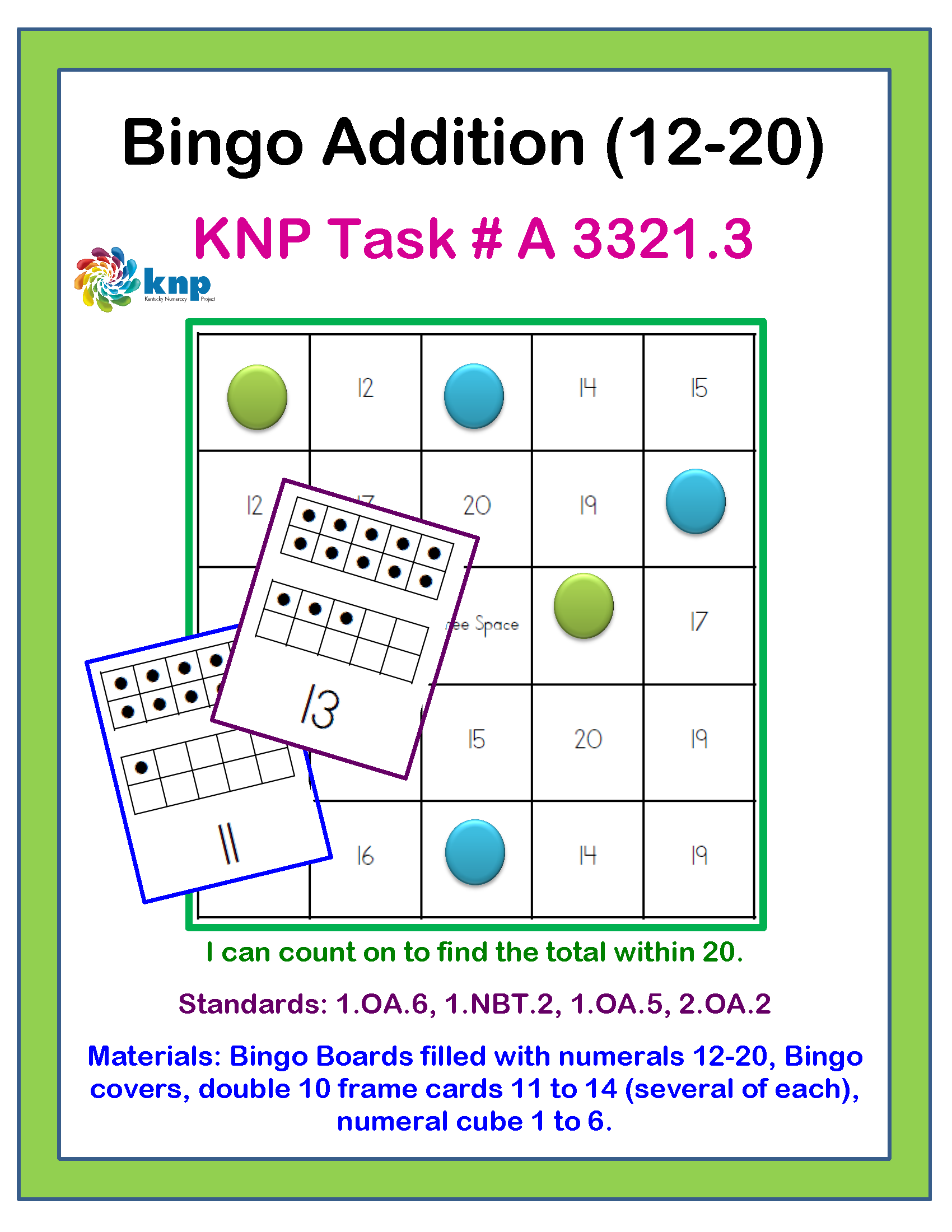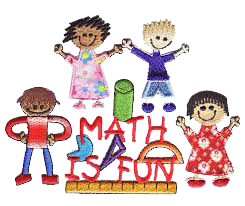“Bingo Addition (12-20)”
KNPIG ID #A 3321.3
What's this activity about?
Bingo is a game that everyone can enjoy! This version, however, is a fun way to help kids learn simple addition using the numbers within 20. Practicing adding these numbers together in different combinations is a great way for kids to become familiar with these facts. This version of Bingo is a fun way to spend time with an important child in your life while also helping him or her learn basic addition facts.
What materials do we need?
Bingo Boards- print as needed! There’s also a blank customizable one
Bingo covers
Two dice with sides labeled 1 to 6
Double ten frame cards -11-14- In the printables link

How do we play?
Each player should have a Bingo board and covers. Players will take turns. On your turn: draw a card, roll the cube and find the total. Then, all players find the total on their board and cover that number.
A “Bingo” is five in a row horizontally, vertically or diagonally. The first player to get "Bingo” wins.
Where’s the Math?
There is a lot of math in this game that goes along with what kids are learning in school. Your child is learning how to combine quantities to get new values. Your child can see these final numbers are composed of different values through the use of the six sided die. This is an important step in internalizing these values and build on that knowledge when moving onto addition problems with greater value and reversing the process with subtraction. Seeing the number built will make it easier for your child to eventually break it down.
Your child is also utilizing many different strategies while they work through these addition problems. You may see them decomposing a number to make easier sums (e.g. 6+7 is like 5+5 and 1+2, so 10+3 is 13) or using doubles (6+7 is like 6+6 and one, so 12+1 is 13). Understanding there are many different ways to solve problems is part of being a mathematician.
Things to Think About:
As you play this with kids, remember to BE PATIENT. Sometimes it’s hard to not to help them along if they are having a hard time figuring it out. They may want to count the total number of dots each time they roll but it is important for them to start seeing the numbers as separate, then as a whole, not just a string of numbers they have to count. Instead of telling them the answer, ask questions that will help them get to the answer on their own. When kids are given the chance to figure things out on their own, they gain a deeper understanding of whatever we are trying to help them learn!
It’s easy to make this skill and activity relevant to your child’s life. Adding together items is something you do all the time, all you have to do is narrate what you are doing to your child. Eventually they will be able to tell you how your actions are just like an addition sentence. You can talk about it while serving them apple slices or baby carrots. You can also have them count the number of trees along two sides of a street and then have them total it. This is a very easy way to transition to subtraction, just start taking items away in the same manner.
Feedback
Send us your thoughts and ideas about these activities. Email the KCM

